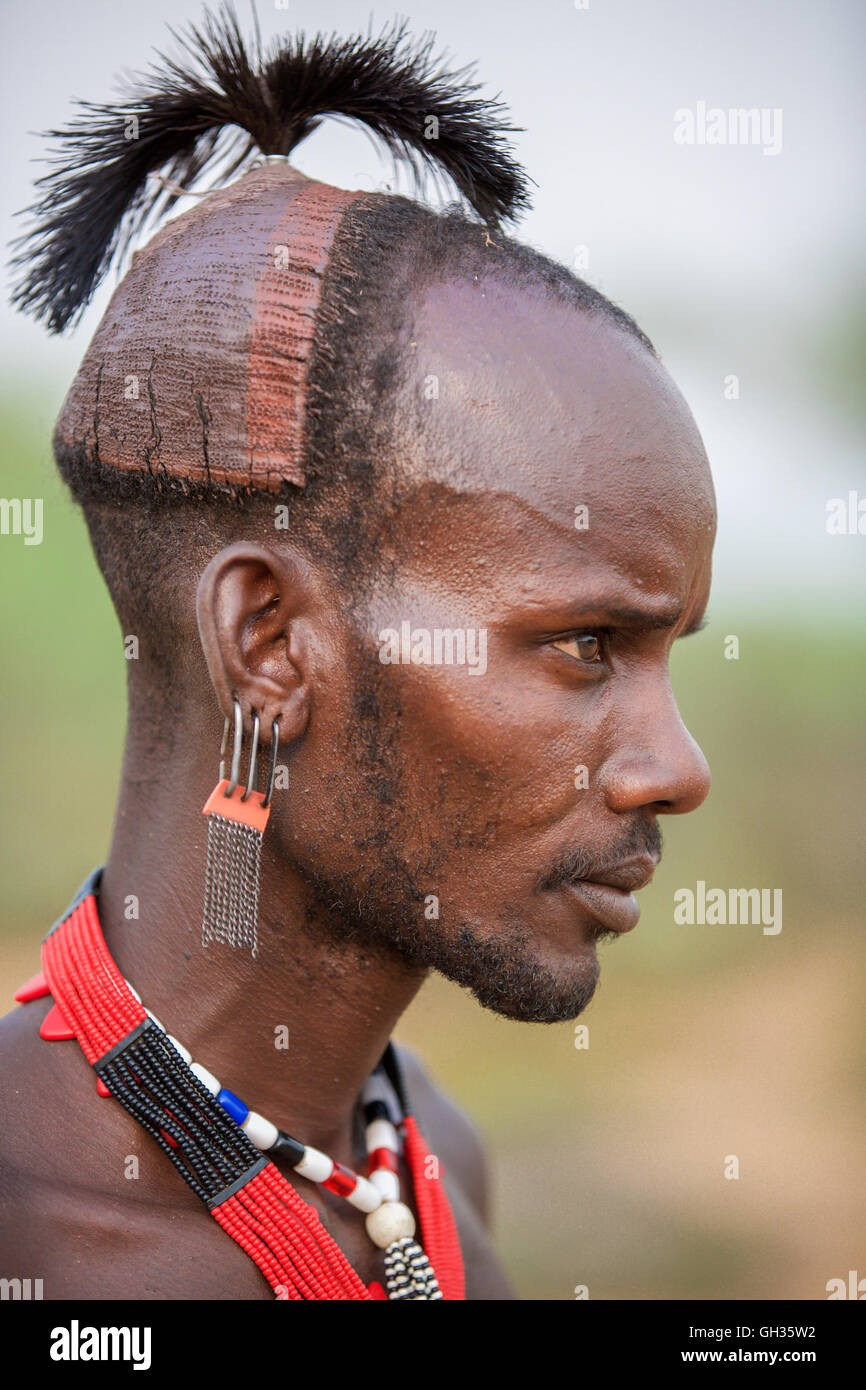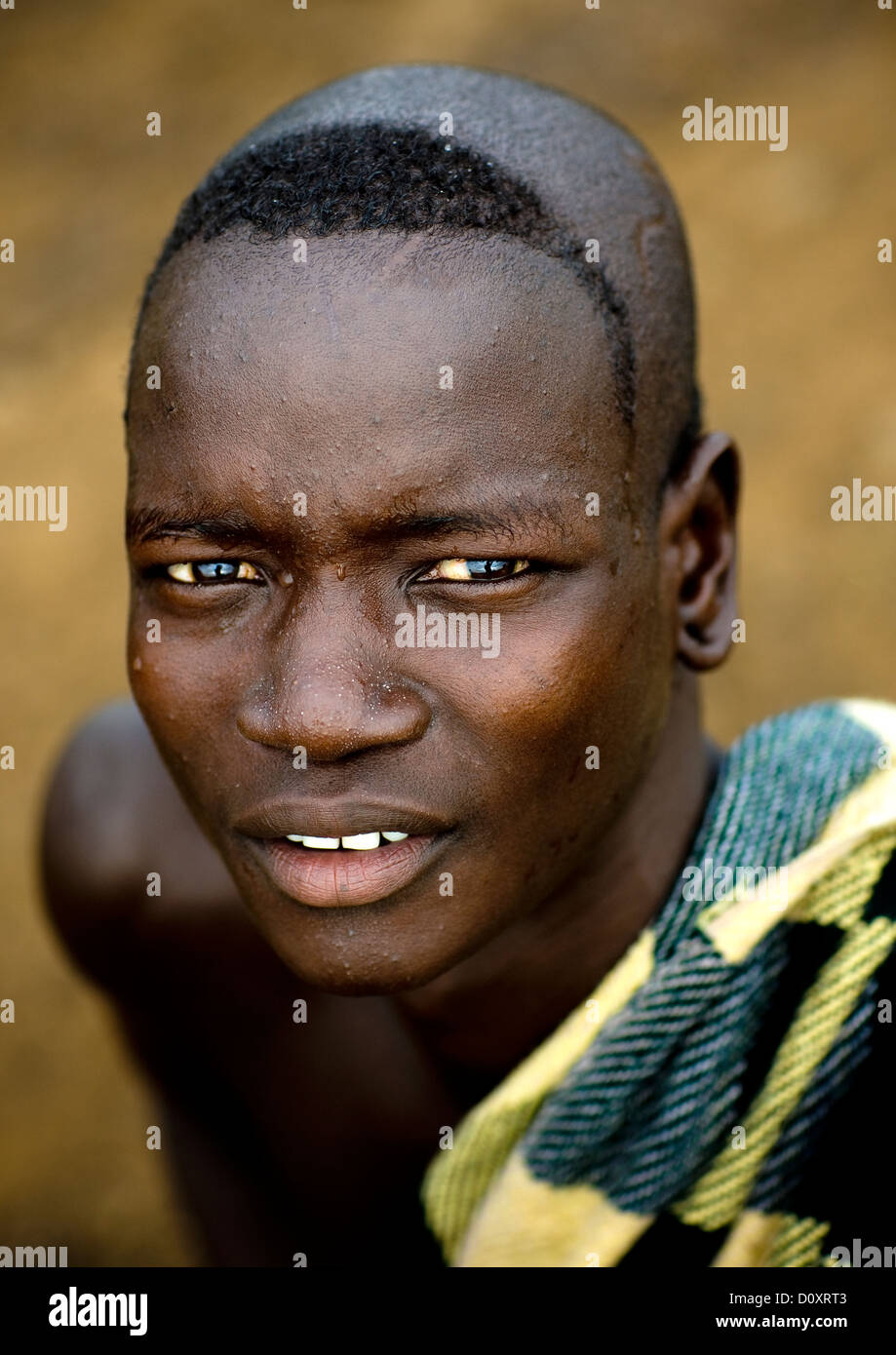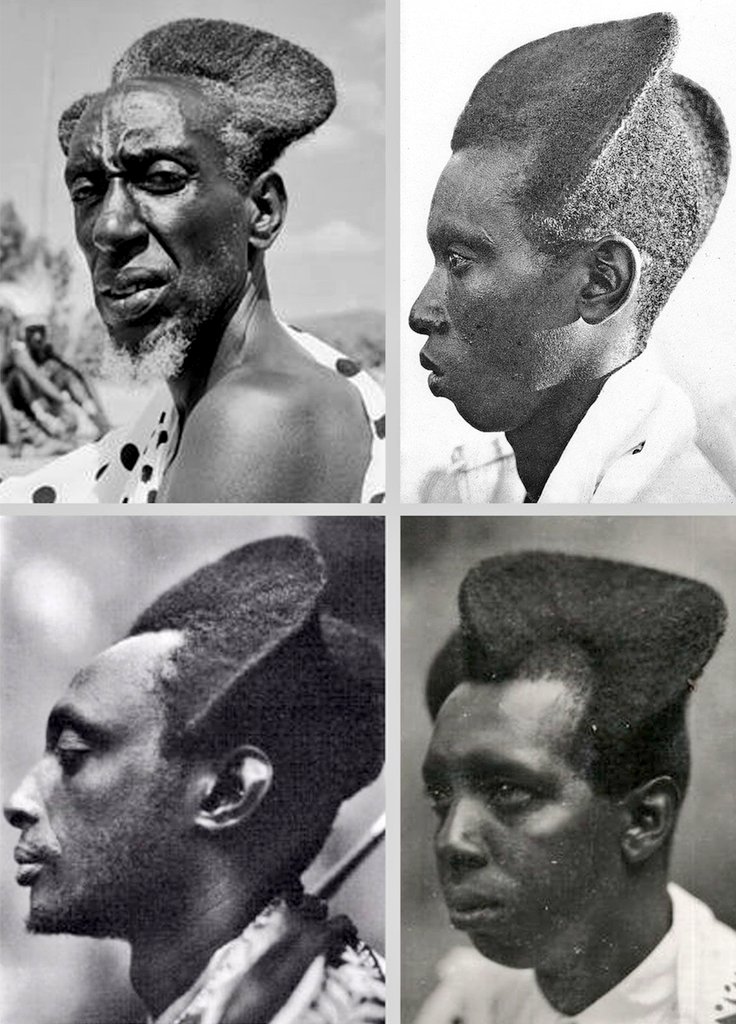Ancient African Male Hairstyles: A Tapestry of Identity, Status, and Spirituality

The continent of Africa, a cradle of civilization, has long been a vibrant tableau of diverse cultures, each expressing its unique identity through various forms of artistry, including the intricate styling of hair. For men across ancient African societies, hair was far more than a mere aesthetic choice; it served as a profound visual language, communicating an individual’s social status, age, marital standing, tribal affiliation, spiritual beliefs, and even their occupation or achievements. These elaborate coiffures were meticulously crafted, often requiring significant time and skill, underscoring their immense cultural value.
The practices surrounding male hair in antiquity were deeply embedded in the social fabric, acting as powerful non-verbal cues that conveyed complex information within communities. Unlike modern perceptions where hair styling might be seen as purely cosmetic, in these ancient contexts, a man’s coiffure was a living document of his life, achievements, and position within the collective. The significance extended beyond mere appearance, touching upon spiritual beliefs, rites of passage, and the very essence of personhood.
The Symbolic Language of Cranial Adornment
Across the vast geographical expanse of ancient Africa, from the Nile Valley to the Great Lakes, and from the Sahara’s edge to the southern tip, the symbolism embedded in male hair practices exhibited both universal themes and localized interpretations. Hair was often considered a conduit to the divine, a connection to ancestral spirits, or a representation of one’s vital force. The head, being the highest point of the body, was frequently regarded as the seat of the soul and intellect, making its adornment a sacred act.
Status and Power: In many societies, elaborate or distinctive styles were reserved for kings, chiefs, warriors, and priests, signifying their authority and elevated position. For instance, in ancient Egypt, while shaved heads were common for hygiene and religious purity among priests, pharaohs and high-ranking officials often wore intricate wigs or braided extensions, sometimes adorned with gold, lapis lazuli, or other precious materials, symbolizing their divine right to rule and immense wealth. Similarly, among the Maasai, long, ochre-dyed braids were a hallmark of warrior status, denoting strength, bravery, and eligibility for marriage.
Age and Life Stages: Hair styling frequently marked transitions through different life stages. Young men undergoing initiation rites might have their heads shaved or styled in a specific manner to signify their passage from boyhood to manhood. Elders, revered for their wisdom, often maintained distinctive, sometimes elaborate, styles that reflected their accumulated knowledge and respected position within the community. The length, texture, and ornamentation of a man’s hair could therefore provide immediate insight into his age group and the responsibilities associated with it.
Tribal and Clan Identity: Distinctive hair patterns and adornments served as clear markers of tribal or clan affiliation. These unique styles fostered a sense of belonging and allowed for immediate identification of kin or allies, particularly in multi-ethnic regions. For example, specific braiding patterns or the incorporation of particular beads or shells could instantly communicate a man’s lineage or community. This visual code was crucial for social cohesion and inter-group relations.
Spiritual and Religious Significance: Hair was often intertwined with spiritual beliefs. In some cultures, it was believed that evil spirits could be trapped in long hair, necessitating shaving or specific protective styles. Conversely, for others, long, well-maintained hair was a sign of spiritual power or a connection to ancestors. Dreadlocks, for instance, found in various forms across different ancient African cultures, were sometimes associated with spiritual devotion, a natural state of being, or a commitment to a particular religious path. The care and styling of hair could thus be a ritualistic act, imbued with profound spiritual meaning.
Diverse Styles and Techniques Across Regions
The sheer variety of male hair practices across the continent was astounding, reflecting the ingenuity and cultural richness of its peoples.
The Nile Valley (Ancient Egypt, Nubia): In ancient Egypt, while priests often maintained shaved heads for purity, the general male population and especially the elite frequently sported short, styled hair, or more commonly, elaborate wigs. These wigs, made from human hair, plant fibers, or wool, were meticulously braided, curled, or layered, and often scented with aromatic oils. They provided protection from the sun and were a symbol of status, wealth, and hygiene. Nubian men, in contrast, were often depicted with thick, elaborate braided styles, sometimes adorned with gold rings or beads, showcasing a distinct aesthetic.
West Africa: This region was a hotbed of intricate hair artistry. Among the Fulani, men sometimes wore their hair in distinctive topknots or braids, often adorned with cowrie shells, which were symbols of wealth and fertility. The Yoruba of Nigeria developed complex braiding and weaving techniques, with specific styles conveying marital status, occupation, or social standing. Cornrows, a technique where hair is braided very close to the scalp in continuous, raised rows, were particularly prevalent and versatile, allowing for countless geometric patterns and designs. These patterns were not merely decorative but often carried specific meanings or were associated with particular ceremonies.
East Africa: The Maasai of Kenya and Tanzania are renowned for their distinctive male hairstyles. Warriors traditionally grew their hair long, meticulously braiding it into thin strands that were then dyed with red ochre and animal fat, creating a striking, reddish-brown hue. These long, slender braids, often adorned with beads, were a powerful symbol of their warrior status, bravery, and readiness for battle. Among other East African groups, such as the Himba of Namibia, men also used ochre and butter to create unique dreadlock-like styles, reflecting their connection to the earth and their cultural identity.
Southern Africa: The Zulu people of Southern Africa had a rich tradition of hair styling. While warriors often shaved their heads, leaving a distinctive topknot or a specific pattern, elders and men of high status might wear elaborate head rings (isicoco), made from woven grass and hair, often reinforced with resin and polished to a shine. These head rings were permanent fixtures, signifying maturity, respect, and marital status. The Xhosa also utilized various braiding and shaving patterns, with specific styles denoting different stages of life or social roles.
Central Africa: In regions like the Congo Basin, elaborate coiffures, often incorporating extensions, intricate weaving, and adornments like beads, shells, and feathers, were common. These styles were frequently associated with initiation ceremonies, spiritual practices, or the display of leadership. The Mangbetu people, for instance, were known for their distinctive elongated head shapes, achieved through cranial modification, which were then accentuated by elaborate, woven hairstyles that further emphasized this unique aesthetic.
Tools, Techniques, and Maintenance
The creation and maintenance of these elaborate coiffures required specialized tools and considerable skill. Combs, often crafted from wood, bone, or ivory, were essential for detangling and sectioning. Needles, made from bone or metal, were used for intricate braiding and weaving. Natural materials played a crucial role:
- Oils and Fats: Shea butter, palm oil, animal fats, and other natural oils were used to moisturize, condition, and give hair a lustrous sheen, while also protecting it from the elements.
- Pigments: Red ochre, charcoal, plant extracts, and other natural dyes were used to color hair, adding another layer of symbolic meaning and aesthetic appeal.
- Adornments: Beads made from glass, clay, wood, or precious stones, cowrie shells (symbols of wealth), feathers, gold, copper, and plant fibers were incorporated to enhance the beauty and symbolic power of the hairstyles.
Hairdressing was often a communal activity, particularly among women who would spend hours meticulously styling the hair of men in their families or communities. This process fostered social bonds, allowed for the exchange of news and stories, and reinforced cultural traditions. The time and effort invested in these styles underscored their importance, transforming hair care into a significant social ritual.
The Enduring Legacy
The rich traditions of male hair styling in ancient Africa were not merely fleeting trends; they were deeply ingrained cultural practices that spoke volumes about identity, community, and the human spirit. These practices represent a sophisticated understanding of aesthetics, symbolism, and social communication. While many specific styles have evolved or faded with time, their legacy endures in contemporary African and diaspora cultures, influencing modern hairstyles, fashion, and artistic expressions. The intricate braids, twists, and locs seen today often carry echoes of these ancient traditions, serving as a powerful link to a rich and profound heritage.
The study of these historical hair practices offers invaluable insights into the social structures, belief systems, and artistic ingenuity of ancient African civilizations. It reveals a world where every strand of hair could tell a story, where personal adornment was a public declaration, and where beauty was inextricably linked to identity and purpose.
FAQs by Ancient African Male Hairstyles
Q: What was the Best Short Hairstyles For Long Faces A Comprehensive Guide To Flattering Cuts primary purpose of male hair styling in ancient African societies? A: Male hair styling served multiple purposes, primarily communicating social status, age, tribal affiliation, marital status, spiritual beliefs, and achievements. It functioned as a visual language within communities.
Q: Were all male hairstyles elaborate, or were simpler styles also common?
A: Both elaborate and simpler styles existed. The complexity often depended on an individual’s social standing, age, or the specific cultural context. Simpler, functional styles were common for daily life, while more intricate ones were reserved for ceremonies or high-status individuals.
Q: What materials and tools were typically used for hair care and styling?
A: Common tools included combs made from wood, bone, or ivory, and needles for intricate work. Materials such as natural oils (e.g., shea butter, palm oil), animal fats, red ochre, charcoal, and plant extracts were used for conditioning and coloring. Adornments included beads, cowrie shells, feathers, and precious metals.
Q: Did male hairstyles change over time within the same culture?
A: Yes, hairstyles were dynamic and evolved over time, influenced by shifts in social structures, religious practices, political changes, and interactions with other cultures. Styles could also change for Short Bob Sew In Weave Hairstyles A Comprehensive Guide To A Timeless Protective Style an individual as they progressed through different life stages.
Q: What was the significance of hair length for men in these ancient cultures?
A: Hair length held varying significance. In some cultures, long hair symbolized wisdom, spiritual power, or warrior status. In others, a shaved head might signify purity, humility, or a specific stage of initiation. The meaning was highly context-dependent.
Q: Was hair styling a solitary activity or a communal one?
A: Hair styling was frequently a communal activity, particularly among women who would meticulously style the hair of men in their families. This fostered social bonds, allowed for the exchange of stories, and reinforced cultural traditions.
Tips by Ancient African Male Hairstyles
1. Examine Archaeological and Artistic Records: To understand historical hair practices, consult archaeological findings, tomb paintings, sculptures, and ancient texts. These provide direct visual and textual evidence of the styles, tools, and adornments used.
2. Consult Ethnographic Studies: Delve into ethnographic accounts and anthropological research that document the cultural significance of hair in traditional African societies. These studies often provide detailed insights into the symbolism and social functions of various coiffures.
3. Analyze Regional Variations: Recognize that “ancient African male hairstyles” encompasses immense diversity. Focus on specific regions, cultures, or time periods to gain a nuanced understanding of their unique hair traditions, rather than generalizing across the entire continent.
4. Understand the Symbolism: Always seek to understand the underlying symbolism of specific styles. Hair was rarely just decorative; it communicated identity, status, age, and spiritual beliefs. Interpreting these meanings is crucial for a comprehensive understanding.
5. Consider the Practicalities: Reflect on the practical aspects of hair maintenance, including the tools, natural products, and time commitment involved. This provides insight into the daily lives and communal practices of ancient peoples.
6. Acknowledge the Legacy: Recognize that many contemporary African and diaspora hairstyles have roots in these ancient traditions. Understanding the historical context enriches the appreciation of modern cultural expressions.
Conclusion by Ancient African Male Hairstyles
The exploration of male hair practices in ancient Africa reveals a profound and intricate aspect of human cultural expression. These elaborate coiffures were not merely aesthetic choices but served as powerful, multi-layered forms of communication, deeply embedded in the social, spiritual, and political landscapes of diverse societies. From the meticulously braided wigs of Egyptian pharaohs to the ochre-dyed locks of Maasai warriors and the permanent head rings of Zulu elders, each style articulated a specific narrative about an individual’s identity, status, and place within their community. The time, skill, and natural resources invested in these cranial adornments underscore their immense cultural value and the sophisticated understanding of symbolism held by these ancient civilizations. The legacy of these rich traditions continues to resonate, offering invaluable insights into the ingenuity, artistry, and enduring cultural heritage of the African continent. Understanding these historical practices enriches the appreciation of the profound connection between personal adornment and collective identity that characterized ancient African societies.







More suggestion: Young Looking Hairstyles For Older Women Embracing Ageless Beauty Through Strategic Hair Choices